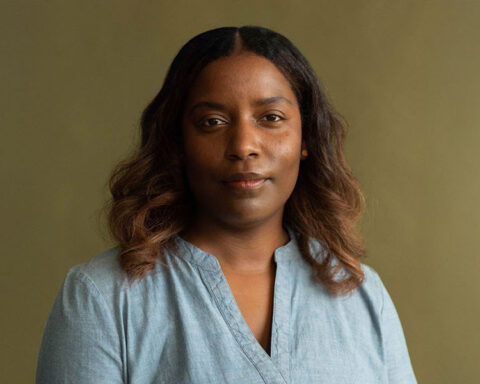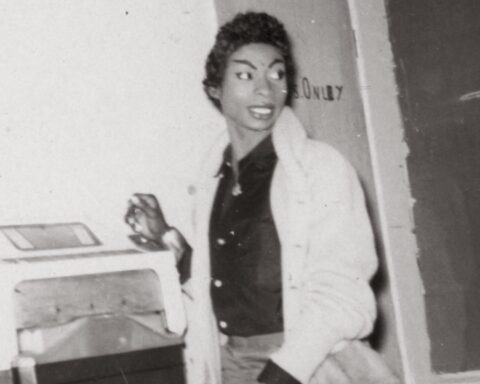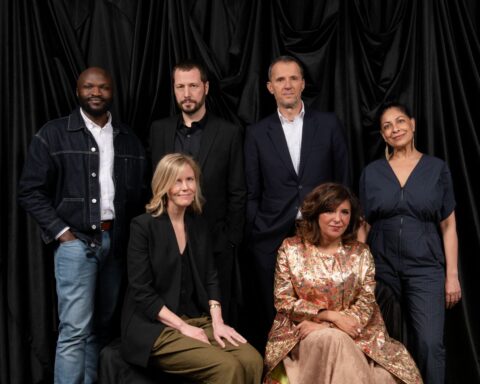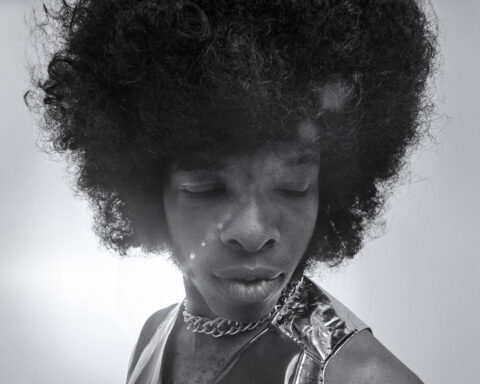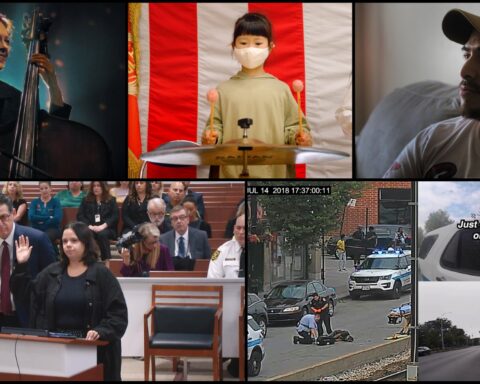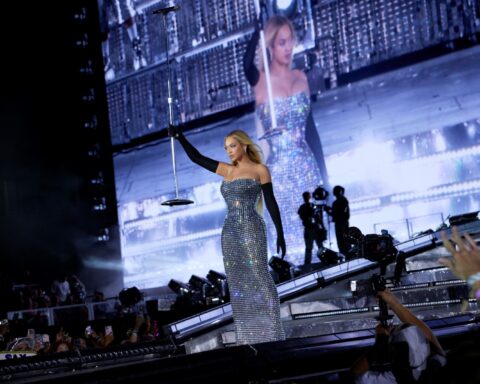En route to the premiere of Tom Donahue’s This Changes Everything at the Toronto International Film Festival, I encounter a filmmaker, who expresses frustration at the difficulty she’s having financing her next movie. “This guy said to me, ‘You are so lucky! This is a great time for women’.” Her voice, already fraught, rises an octave. “I wanted to scream! No it’s not!” Has nothing changed, I wonder?
This Changes Everything, about the gender inequity and persistent systemic sexism women face in Hollywood, lands at a particular moment in time, in the wake of the #MeToo and #Times Up movements. The screening is preceded by the Share Her Journey rally, featuring industry speakers such as filmmaker Amma Asante and actor Geena Davis, who appears in This Changes Everything and is its Executive Producer. Her story forms one of the major spines of the film, beginning as a young woman who absorbed the message that feminism was a bad thing, to the adult she became, discovering that a feminist was exactly what she wanted to be.
As head of the Geena Davis Institute, she has made it her mission to track representations of women and girls on screen, and the direct impact that imagery, often hyper-sexualized, has on how we perceive women and girls in reality. Change, as Davis points out, has been glacially slow. “We grew up with Dick and Jane,” says Davis, “but all we ever saw was Dick.”’
It’s a great line, and it sets the tone for the film, which includes interviews with Hollywood luminaries such as Shonda Rhimes, who describes pitching Gray’s Anatomy to “the Old White Men Room,” Sharon Stone being coerced to sit on the director’s lap to take his direction, Chloë Grace Moretz, at 16, being told to add silicone inserts (a.k.a. veal cutlets) to her bra to enlarge her breasts, and Rose McGowan doing her best to act while the camera was focused on her ass.
A second storyline in the film is that of Maria Giese and her tireless efforts working with the American Civil Liberties Union to document Hollywood’s overt and covert sexist hiring practices. Donahue then turns the clock back to an earlier movement, in 1979, when a group of women in Hollywood realized that despite their qualifications, none of them were getting hired.
Dubbed “The Original Six,” they began compiling statistics of how many films were helmed by women—as one wryly observes, “you didn’t have to be good at math to add up a column of zeroes”—then took their findings to the male-dominated Directors Guild of America. Not surprisingly, they were met with resistance. Half-measures were initiated. Nothing changed.
“The Original Six” attempted to do what Giese, in a Herculean effort (scratch that, an Amazonian effort), is finally getting close to accomplishing: making the industry accountable for what are, essentially, illegal discriminatory hiring practices. The case is now before the courts.
Another film covering similar territory to Donahue’s, is Amy Adrion’s Half the Picture, which premiered at Sundance earlier this year. Adrion’s film features interviews with 47 filmmakers, including directors Ava DuVernay, Jill Soloway, Mary Harron and Miranda July, but with a starker, less glossy, approach.
Both films are powerful, and an urgent call to action, bringing to mind an earlier documentary I saw as an aspiring filmmaker, thirty years ago, in 1988, Calling The Shots by Canadian filmmaking duo Janis Cole and Holly Dale. The film screened at TIFF (then called The Festival of Festivals), and featured interviews with prominent women filmmakers such as Penelope Spheeris, Euzhan Palcy and Susan Seidelman, at a time when women appeared to be making big strides in the industry. “The door has opened and it’s not going to shut again,” said director Martha Coolidge at the time, her optimism especially poignant given how little has changed in thirty years.
At the time, Globe and Mail film critic Jay Scott wrote: “The evidence of sexist prejudice encyclopedically assembled by Janis Cole and Holly Dale, would be paralyzingly depressing were it not for the spunk and passion of most of the women they interview.” Cut to 2018.
What Calling the Shots and Half the Picture share, in addition to subject matter, is that they were directed, shot and edited by women, and feature only women in the film. This Changes Everything, on the other hand, includes interviews with men—some allies, some villains. Which brings us to the elephant in the room: a man directed THIS film of all films?
Here’s the thing. Donahue started the film several years ago, after making an earlier star-studded documentary, Casting By, in 2013, about the unrecognized work of casting agents in Hollywood, the majority of whom are female. And he’s taken pains to point out it was a female industry insider who urged him to tackle the subject. From Donahue’s perspective, in order for things to really change, we need the men to get on board. As Meryl Streep argues in the film, “progress will happen when men take a stand. It’s the chivalry of the 21st century.” It’s a debatable point, but a clear acknowledgement of the power that men wield—-and let’s face it, power is what we’re talking about here. Power and money.
The end credits for This Changes Everything proudly proclaim that 75% of the film’s crew included women. And editor Jasmin Way’s work stands out for its deft massaging of 100 interviews into a cohesive and dramatic structure. But, and this is a pebble in my shoe, given the subject matter, and the optics, it’s surprising that Donahue chose a male cinematographer, resulting in two of the three key creative positions being held by men.
After the screening, I huddle with a group of female filmmaking colleagues. The message is strong, we all agree. It needs to be heard. “Why not directed by a man?” one pipes up. “Because THAT’S what the film is ABOUT: the difficulty of women getting work as directors”, another responds. It’s a circular discussion, one that hopefully we won’t have to have when everything actually is changed.




